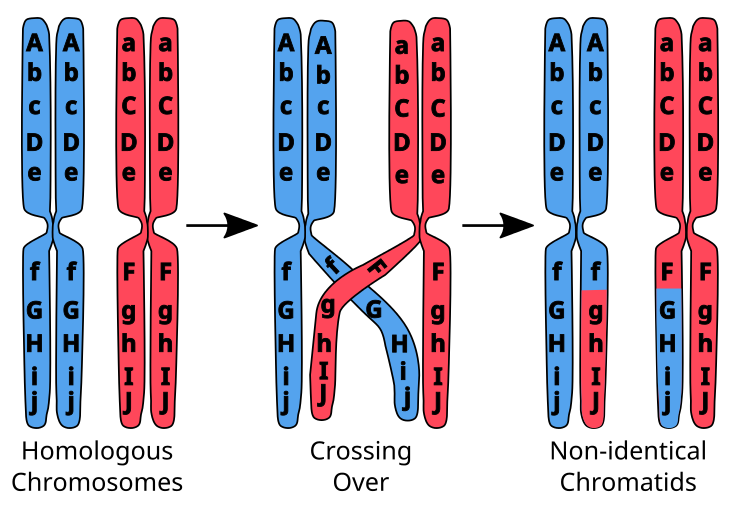Table of Contents
Introduction
Meiosis is a process of nuclear division that reduces the number of chromosomes in the resulting cells by half. Thus, meiosis is sometimes called “reductional division.” For many organisms the resulting cells become specialized “sex cells” or gametes.
In organisms that reproduce sexually, chromosomes are typically diploid (2N) or occur as double sets (homologous pairs) in each nucleus. Each homolog of a pair has the same sites or loci for the same genes. You might recognize that you have one set of chromosomes from your mother and the remaining set from your father.
Meiosis reduces the number of chromosomes to a haploid (1N) or single set. This reduction is significant because a cell with a haploid number of chromosomes can fuse with another haploid cell during sexual reproduction and restore the original, diploid number of chromosomes to the new individual.
In addition to reducing the number of chromosomes, meiosis shuffles the genetic material so that each resulting cell carries a new and unique set of genes in a process of independent assortment.
As in mitosis, meiosis is preceded by replication of each chromosome to form two chromatids attached at a centromere. However, reduction of the chromosome number and production of new genetic combinations result from two events that don’t occur in mitosis. First, meiosis includes two rounds of chromosome separation. Chromosomes are replicated before the first round, but not before the second round. Thus, the genetic material is replicated once and divided twice. This produces half the original number of chromosomes.
Meiosis animation
Synapsis and crossing over
Second, during an early stage of meiosis each chromosome (comprised of two chromatids) pairs along its length with its homolog. This pairing of homologous chromosomes results in a physical touching called synapsis, during which the four chromatids (a tetrad) exchange various segments of genetic material. This exchange of genetic material is called crossing-over and produces new genetic combinations. During crossing-over there is no gain or loss of genetic material. But afterward, each chromatid of the chromosomes contains different segments (alleles) that it exchanged with other chromatid.

Crossing over between chromatids of homologous chromosomes increases genetic diversity during meiosis I. Synapsis occurs during prophase I as the homologous chromosomes begin to pair up.



